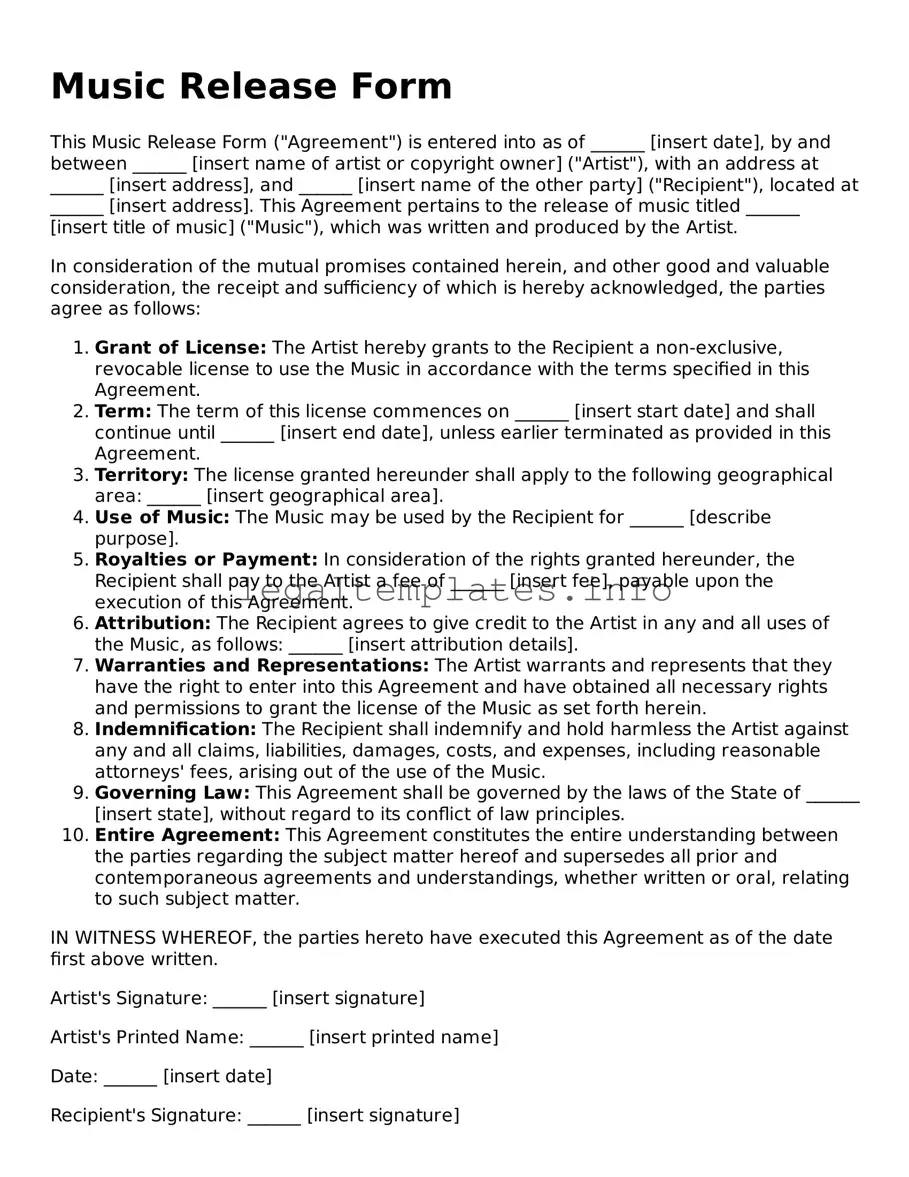A Music Release Form is similar to a Photo Release Form, as both are designed to grant permission to use the person's creative work. In the case of a Photo Release Form, the creator or subject of the photograph gives their consent to have their image published or used by others. This is akin to how a Music Release Form operates, allowing an artist's music to be used under agreed conditions. Both forms protect the rights of the creator or subject and ensure they are properly credited or compensated.
Similarly, a Model Release Form is closely related to a Music Release Form. Model Release Forms are used in photography and video production to obtain the consent of the person appearing in the material. Like music artists, models need to agree on how their likeness will be used. Both documents are crucial in the professional use of someone's personal or creative property, ensuring that their work or image can be legally utilized in various media.
A Video Release Form also shares similarities with a Music Release Form. This type of form is used when video recordings of individuals are to be published or distributed. Both forms serve the purpose of obtaining permission before the public or commercial use of creative content, whether it's a music track or video footage, protecting the rights of the content creators and allowing others to use their work in a legal manner.
In the realm of literature and publishing, a Copyright Transfer Agreement is akin to a Music Release Form. While a Copyright Transfer Agreement deals with the rights to written content, transferring them from the author to another party, a Music Release Form deals with the rights to musical content. Both agreements involve the creator giving up certain rights to their work, allowing it to be used by others while also setting terms for that use.
An Intellectual Property Release Form echoes the Music Release Form by handling the rights to use creative work. This form can encompass any intellectual property, including music, writings, inventions, and designs. The key aspect is the permission granted by the creator or owner to another party, allowing them to use the intellectual property similar to how music is licensed through a Music Release Form.
A Location Release Form, while focused on the use of physical spaces for filming or photography, shares the root purpose of allowing certain rights to use someone's property. Just as a Music Release Form enables the use of a person's musical work, a Location Release Form allows for the use of a property for artistic or commercial purposes, underscoring the importance of obtaining consent before utilizing someone's assets.
Work for Hire Agreements, although broader, have parallels with Music Release Forms in regards to intellectual property rights. These agreements often outline that any creative output made by an employee or contractor belongs to the employer or commissioning party from the onset. For musicians, this could mean any music produced is owned by the record label or studio, much like how a Music Release Form can specify how and where the music can be used.
A Non-Disclosure Agreement (NDA) is slightly different but still shares a fundamental connection with a Music Release Form in terms of protecting valuable information. While an NDA is designed to prevent the sharing of proprietary information, a Music Release Form protects an artist's work from being used without permission. Both documents serve to safeguard sensitive content, though in different contexts.
Lastly, a Licensing Agreement can often resemble a Music Release Form, though it is more versatile in application. This type of agreement allows one party to use another's intellectual property — be it music, patents, or trademarks — in exchange for compensation. It's the legal groundwork that stipulates how, where, and for how long that intellectual property can be used, ensuring that creators retain control over their work while monetizing it.
